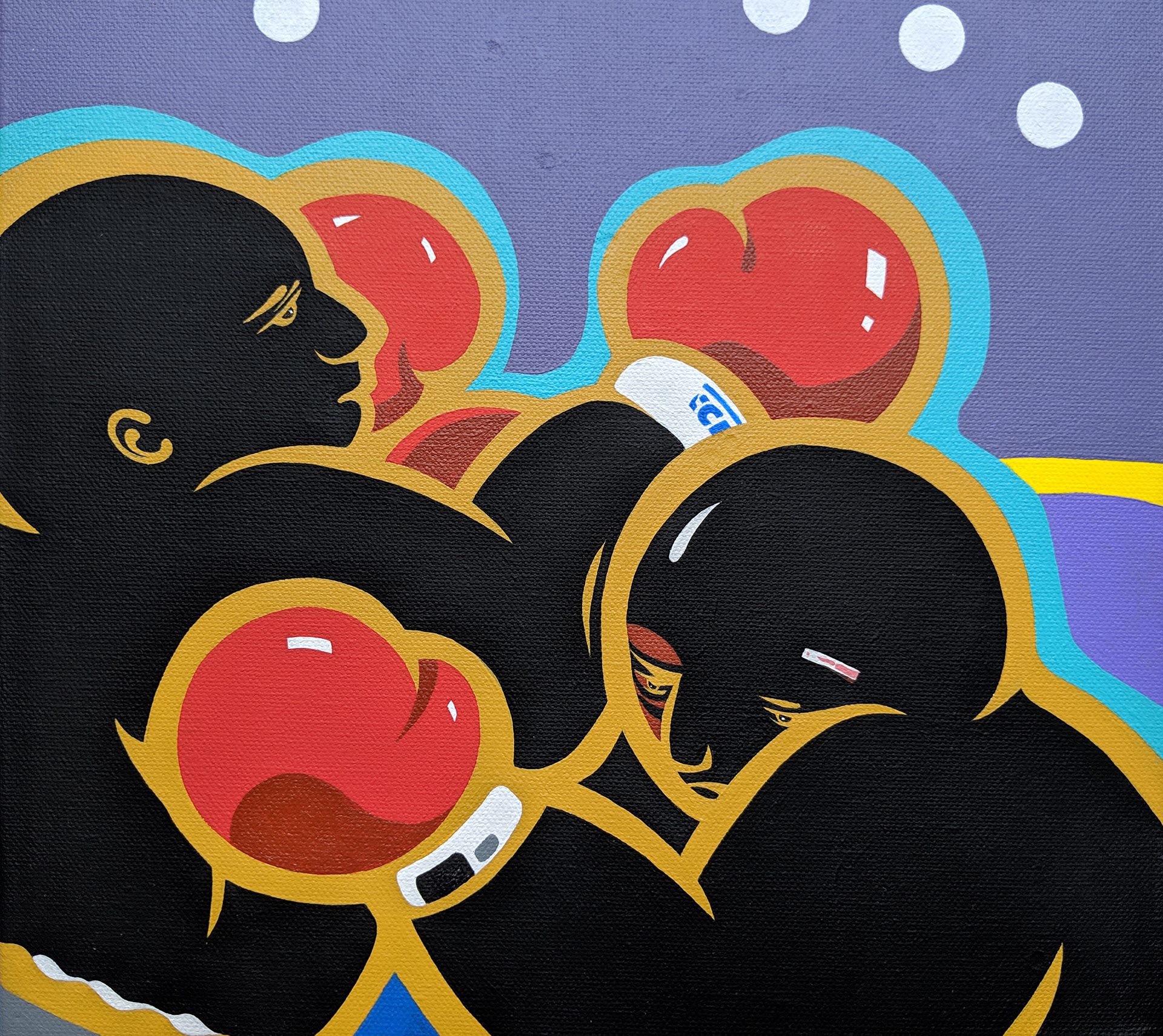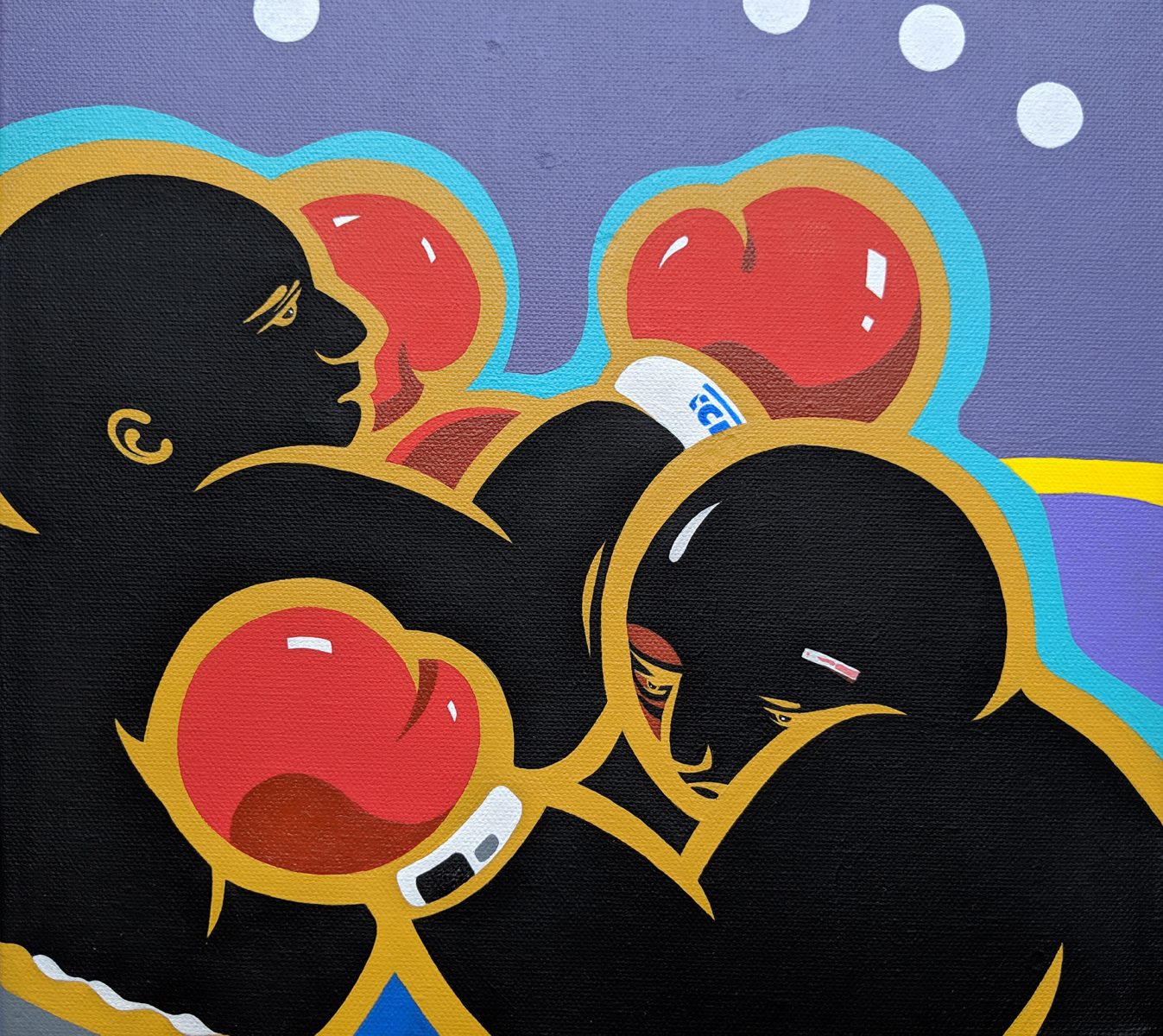Past Resident
Carl Moore

Carl E. Moore‘s work over the last few years has dealt with identity and color. During this process, he compares social ideologies about race and stereotypes to everyday colors and the perception of these colors in our environment.
He uses media-based events as the primary theme for his work. By taking situations and reducing them down to their most basic form, it allows him to direct the narrative.
He uses color and content to redefine the conversation by developing a social connection between the characters and their environment. The color becomes an important part of the dialogue, and the content becomes part of the social statement. Moore’s work is a form of visual communication using simplicity and depth to express social and ethical issues.
“Art is life.”
 Q&A with Carl Moore (from Crosstown Arts newsletter, August 6, 2020)
Q&A with Carl Moore (from Crosstown Arts newsletter, August 6, 2020)
Crosstown Arts resident artist Carl Moore is a Memphis-based visual artist who originally hails from Canton, Mississippi. Moore received his BFA and MFA from Memphis College of Art.
Jesse Butcher: You are currently operating in two studios. How do you navigate that process? What does a day in your studio look like?
Carl Moore: I’m usually working on more than one painting or series at a time. I think as an artist, anywhere in your home is, by convenience, your studio, give or take a designated work space. I consider the [Crosstown Arts] residency space a working studio, designed mainly for the purpose of creating art. The two spaces work in tandem.
Shortly after I started the residency, the world shut down due to the spread of coronavirus, and I had to re-think the way I worked. A majority of my work at this time was created in my home studio. I still tried to put in time at the residency studio while moving works in progress back and forth. This became a stress point for me. There was always this fear that the [Concourse] building would completely shut down to everyone, and I wouldn’t have access to the projects I started. The plus side during this time was that my studio was practically in an isolated part of the building.
In regard to studio operation, I paint smaller works at home and larger paintings in the residency studio. I work on a specific body of work in each space, as well as work with two different mediums (acrylic and acrylic gouache). When I’m home, I’m painting, working on sketches, printing reference material for gridding, and planning the next two or three paintings for the residency. When I’m working in my residency studio, I’m primarily drawing and painting.
A day in the studio for me is transferring drawings to canvas or 300-pound watercolor paper, mixing paint, moving a canvas from the table to the wall and back to the table to see if it’s working or not. Sometimes there is music, a podcast, or movie playing in the background, and sometimes there’s just silence. I don’t spend a lot of time theorizing about my work. I would never finish a painting if I did that. I just paint, and if it’s not working, or if colors are conflicting, I repaint it.
Can you speak about how issues in the media influence your work?
The media does influence my work, but not just for the conflicting aspects of protest, police violence, or human rights. There is the availability of information, good and bad, still video frames capturing life in motion as we know it. I do a lot of research for my work; the media outlets do the other half. I use the media to create a subjective balance. There are always other people who are indirectly part of the story. The mothers, fathers, sisters, brothers, the community that involuntarily became part of an incident.
The murder of George Floyd on national TV by a Minneapolis policeman became another stress point for me, especially during the coronavirus [pandemic]. I tried not to be reactionary by creating work “right now” relative to his death, because I knew there would be artists across the country creating great work to express their anger and outrage, and rightly so. I was and still am angry and outraged, but I want to create a work that shows my respect for Mr. Floyd and his family and tells the story that I want the viewer to see.
Now there are so many versions of what’s wrong and what’s right, and everyone creates their own narrative. My work tries to find a middle ground and ask honest questions.
You have developed a phenomenal and precise color palette within your work. What was the refinement process like for you to establish your spectrum?
My color palette comes from the narrative in the artwork. Over the years, I’ve pushed my colors further and further toward a more social color chart, relying completely on the content of the painting to set the tonal value. My process allows me to create several versions of the same color, which gives me more opportunity to create test palettes. I mix a lot of paint, using airtight containers to make it last from a few months to a year, so I can maintain a consistent look in my work. My paintings are not necessarily about a color but about how the colors work together in the composition.

